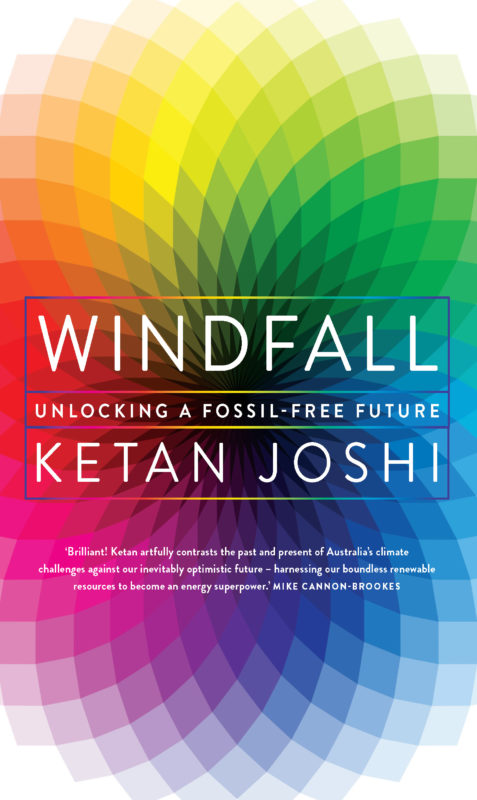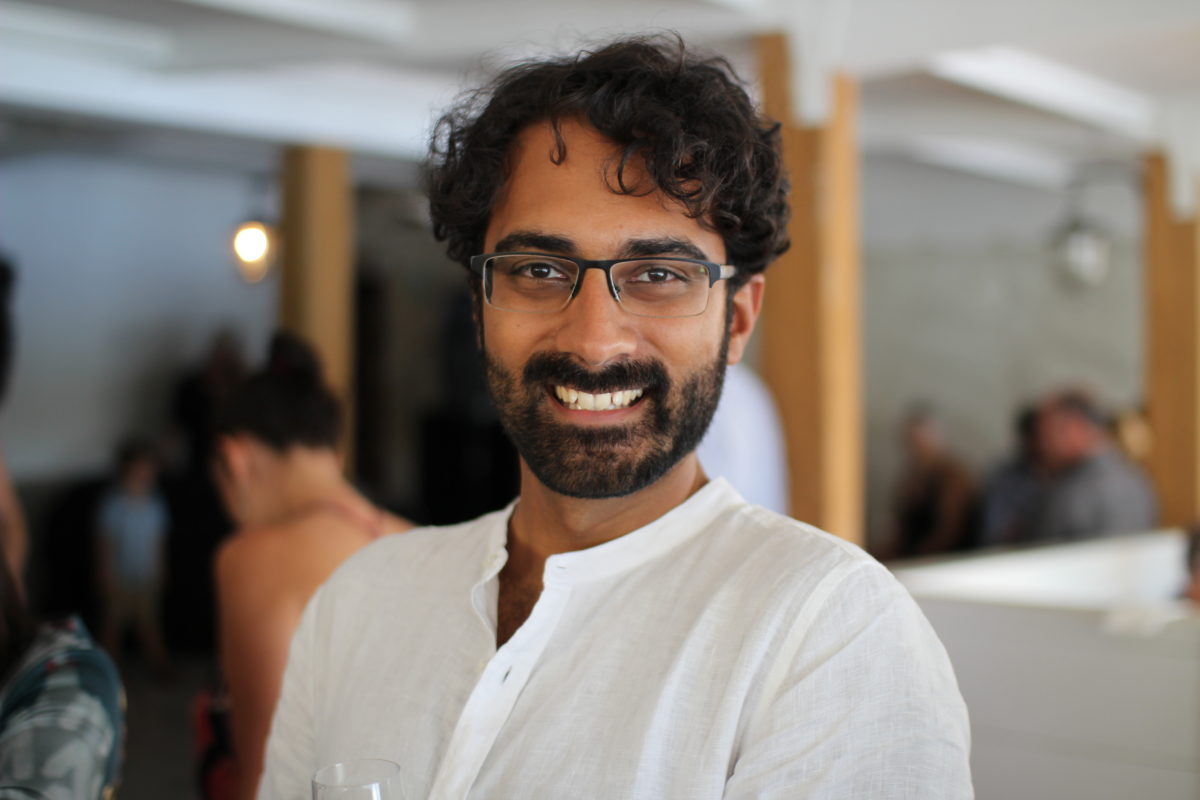Tomorrow, September 1, will see the launch of a book intended to help people fathom how energy transition and climate action are portrayed by politicians, the media and other vested interests. Windfall: Unlocking a fossil-free future, is published by NewSouth Books. Author Ketan Joshi, once a data analyst working in the renewables realm, and in recent years a respected commentator and writer on the subject of Australia’s energy transition, talks here to pv magazine about the importance of citizen engagement in increasing the effectiveness and pace of climate action.
pv magazine: What spurred you to write the book?
Ketan Joshi: I’d been thinking about gathering up a lot of my experiences and then trying to apply them to the future of Australia’s energy and climate situation. I want to talk to people who tacitly support climate action, or who are half interested in it. I want to empower them to have a bit more technological knowledge and understanding of how rhetorical tricks are used to scare people into not wanting to support climate action. I want to enable people to be better advocates for climate action, to understand the nuances and the potential roadblocks and stumbling points for the renewable transition. I think that a healthy advocacy means being aware of where it could go wrong, instead of pretending that everything’s easy and OK.
Over the past 10 years Australia has had a lot of opportunities to take really strong climate action in a way that’s directly, and immediately beneficial for everybody in the country. And the majority of those opportunities have really been stifled by a small number of people with a huge amount of influence. I think it can be avoided in the future, if we just learn to recognise when and where it’s happening.
What’s getting in the way of making that renewable energy transition a groundswell or a more popular revolution? Part of what you say in the book is that we need to benefit a wider range of people.
The growth of renewables in the past decade has far surpassed expectations. They’ve become way cheaper than anybody anticipated, they’ve grown at a rate much higher than anybody anticipated, but that is still not enough. It has to grow even further in the next decade to get us where we need to be around the world.
The main reasons why it hasn’t grown as quickly as it should in Australia — even though it has been pretty good — has been roadblocks put in place by political players. And to a smaller degree, a notable influence has also been failures in the development process for large scale renewables. I think that wind power could have grown a lot more quickly, for example, had they gotten community engagement and ownership factors right from the outset. That’s another lesson for the next decade.
OK, so how can the Australian renewables industry help communities to see and reap the benefits of renewable energy?
There are two elements to that. The first is community engagement, a bi-directional development process where community members actually get involved in decision making around large-scale renewable projects. It’s worth noting that in the next decade or so transmission projects are going to play a role in this too, so it’s not just solar and wind.
The second element is increasing the quantity of community ownership so that communities actually buy and own parts of large-scale projects. An example would be a community owning one or two turbines out of, say, a 50-turbine project. These things increase citizen participation in climate action and have a really positive impact on first of all the scale of the roll out, so you can actually have a deployment of renewables as we saw in Germany and Denmark a couple of decades ago. And the other element is that it engenders much broader support for climate action so that as soon as you start looking at things outside of renewables, such as changing transport to electric vehicles, or changing industry, people understand what climate action is about because they’ve already participated, they already have a close relationship with it. Those two elements will be really really important I think in the next decade.
Australia’s largest community owned solar farm, Majura Community Solar Farm in Canberra, broke ground on Friday, but it took so much time and dedication to get it off the ground.
It’s a really tough thing to do, and I detail this a little bit in the book. The problem with this concept is that it’s just super, super difficult from the perspective of administration and logistics. Even feasibility studies require a lot of money upfront. It’s hard to go to a community and say, “I’d like a million dollars, but I can’t guarantee that anything will ever be built.” There needs to be much stronger government support for community energy projects, some state governments are already doing a pretty good job, but I still think there’s quite a long way to go.
We have a real issue in north-west Tasmania over the transmission lines planned to carry energy from the Robben Island Solar Farm to feed the Marinus Link project. It is almost universally approved by the industry and government, but the community is vehemently opposed. How can developers ease these conflicts?
I’ve looked into that specific line related to Marinus North and the Robben Island Wind Farm. I’ve been getting more nervous about it as time goes on, simply because I think that a lot of the companies responsible for developing these transmission line projects do not grasp what could possibly go wrong. That is, people who feel like they’re completely disconnected and disenfranchised by these projects will object to them very, very strongly, and it won’t matter if the projects are justified on the grounds that they enable greater penetrations of renewable energy. If people don’t feel like they have buy-in to that project all they see is downside.
Germany has trialled community-owned transmission, but another alternative is to reduce the amount of transmission that you need by investing a bit more heavily in demand response and investing a bit more heavily in battery storage and distributed energy resources. So having a high quantity of say rooftop solar within pre-existing grid networks as opposed to large renewable projects that need new transmission to connect up.
We need to get far better at having a democratic and heavily citizen involved process in planning the future. The Tasmanian transmission is a perfect example of where that’s not going right. And if that is replicated across all the different types of transmission that will be needed to account for a much higher share of renewables, we’re going to have a really big problem that could stall the entire process, as it has in Germany. Germany has a community backlash against transmission lines that has resulted in congestion in the grid in the north of the country. I talk about Germany a lot, not just as an example of where things have gone right, but where they’re doing it wrong as well, and I think Australia can preempt all those problems.
When you talk about having community involvement, are you referring to having a financial stake or promoting a sense of engagement and having a say in what’s going on?
It’s both. It depends on the technology being deployed, and it depends essentially what the community wants. Some communities don’t actually want to be financially involved simply because it’ll be so much effort that it’s not worth the financial rewards they might get.
The key part is the democratic process and involving people such that they’re not feeling like they have no say in this big change to the landscape or the community. That is really, really important for climate action as a whole. What we’re seeing around the world is that increased levels of citizen participation in any type of climate action leads to much better outcomes from technological, social and economic perspectives.
How can we better promote the employment potential of renewable energy?
I only touch on this briefly in the book. I wish I’d had more time to go into it, but take the Hazelwood coal fired power station in Victoria. It was closed very suddenly and many thousands of jobs were lost in that shut down.
A simplistic narrative was going around for a while, suggesting you take everyone who’s working in the coal jobs, and you put them on a wind farm or a solar farm. That’s not really how it works. There are fewer jobs in renewable energy because renewable assets are simpler, they have fewer moving parts, they need less maintenance, their fuel is free, you don’t need to transport it. What you really need to do then is pair that transition with a very broad jobs program that listens to people’s needs. We should be thinking about low-carbon jobs, in health, education, energy, even manufacturing electric vehicles. There’s a lot of room for many different types of skills and it’s clear that this conversation about “a just transition” needs to change to something much bigger and broader.
Do you see potential for more community engagement in renewable energy zones, perhaps, than in individual large scale wind and solar plants?
I think these zones are going to be at the heart of renewable energy development over the next decade. To have that level of planning, taking a whole-of-system approach to the growth of renewables is extremely important. It’s great that AEMO’s Integrated System Plan is being taken up by state governments, such as New South Wales. But I also think we need to passionately defend this concept over the next decade, because I think that opponents of climate action and defenders of fossil fuels will probably start to recognise, just how important it is.
Do you wonder how there can even be opponents anymore? Is the government’s opposition to renewables just politics or are our politicians as appalling as they appear to be?
I think they are. A good example is a couple of days ago, Angus Taylor started trying to change the remit of the Clean Energy Finance Corporation to include gas. It’s just a very simple example of how they’re trying to dismantle the effectiveness of clean energy functions within government. It’s really, really concerning. The people within these agencies work so hard to aid the energy transition, it really sucks that government is trying so hard to attack them. And it’s not like the Tony Abbott-style attacks of 2014 when he blithely tried to abolish renewable agencies. This government is trying to decay them from the inside.

This content is protected by copyright and may not be reused. If you want to cooperate with us and would like to reuse some of our content, please contact: editors@pv-magazine.com.









By submitting this form you agree to pv magazine using your data for the purposes of publishing your comment.
Your personal data will only be disclosed or otherwise transmitted to third parties for the purposes of spam filtering or if this is necessary for technical maintenance of the website. Any other transfer to third parties will not take place unless this is justified on the basis of applicable data protection regulations or if pv magazine is legally obliged to do so.
You may revoke this consent at any time with effect for the future, in which case your personal data will be deleted immediately. Otherwise, your data will be deleted if pv magazine has processed your request or the purpose of data storage is fulfilled.
Further information on data privacy can be found in our Data Protection Policy.